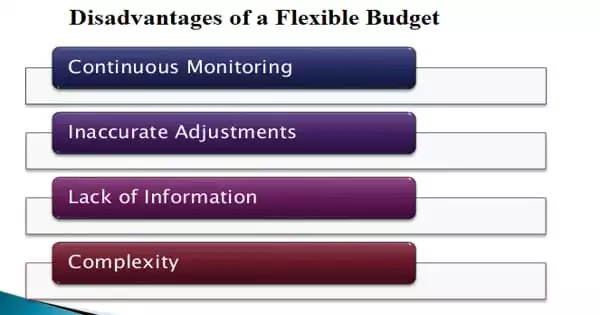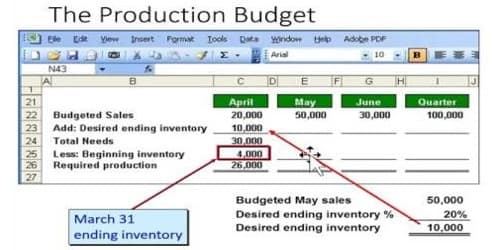Budgets are estimates of the amount of money that a business or other organization takes in and spends over a specific time period. Budgets are intended to help managers better plan for the future of the company. The main disadvantage of a flexible budget is that it makes prediction difficult because it does not allow the manager to insert set figures. Instead of seeing a single estimate of what to expect financially, the manager is presented with a range of estimates.
Disadvantages of a flexible budget –
A flexible budget, like many accounting tools, can have drawbacks. Understanding the drawbacks of this type of budgeting can assist you in determining whether a flexible budget is appropriate for your company. The following are some disadvantages of having a flexible budget:
- Lack of revenue comparison
There is no comparison of budgeted to actual revenues in a flexible budget because the two numbers are the same. The model is intended to match actual expenses to anticipated expenses rather than to compare revenue levels. There is no way to tell whether actual revenues are higher or lower than expected.
A flexible budget cannot be used to compare actual expenses or revenue to expected expenses or revenue because it is adjusted on a regular basis to reflect a company’s current revenue. This can make determining whether a company’s revenue is above or below expectations difficult.
- Closing delay
A flexible budget cannot be preloaded into accounting software to be compared to financial statements. Instead, the accountant must wait until the end of a financial reporting period before entering revenue and other activity measures into the budget model, extracting the results, and loading them into the accounting software. Only then can financial statements with budget versus actual information be issued, which delays the issuance of financial statements.
- Complicated formula
It can be difficult to create a flexible budget. This is due to the fact that not all costs incurred by a company are variable and must be budgeted as a fixed cost. Calculating each category and determining the appropriate cost can be difficult and time-consuming.
Although the flex budget is a useful tool, it can be difficult to develop and implement. One flaw in its formulation is that many costs are not fully variable, but rather have a fixed cost component that must be calculated and included in the budget formula. Furthermore, developing cost formulas can take a significant amount of time, which is more time than the typical budgeting staff has available during the budget process.
- Not always applicable
Certain businesses, particularly those with a high percentage of fixed overhead costs, may not benefit from a flexible budget. A company that has little to no cost of goods sold and a fixed overhead cost each month, for example, is unlikely to benefit from a flexible budget plan. Some businesses have so few variable costs of any kind that creating a flexible budget is pointless. Instead, they have the massive fixed overhead that does not change in response to any type of activity.
Consider a web store that provides software downloads to its customers; a certain amount of expenditure is required to maintain the store, but there is essentially no cost of goods sold, other than credit card fees. There is no point in creating a flexible budget in this situation because it will not differ from a static budget.
In short, a flexible budget takes more time to create, postpones the release of financial statements, does not account for revenue variances, and may not be applicable under certain budget models. These are serious issues that tend to limit its application.
















